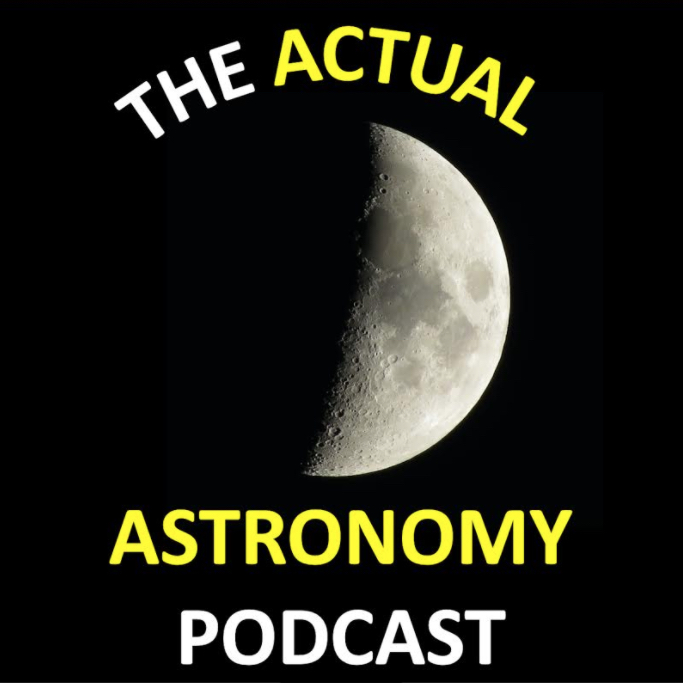Podaster: Shane and Chris

Title: Lake & Terrain Effects on Astronomy
Organization: Actual Astronomy
Link : https://actualastronomy.podbean.com/
Description: The Actual Astronomy Podcast presents Lake & Terrain Effects on Astronomy and places a focus on how your local surroundings impact your conditions for astronomy. In this episode we have a special guest, retired Environment Canada Meteorologist ALister Ling join us to talk about the weather and Astronomy. We discuss the impact of lakes, hills, fields and mountains on astronomy as well as upper atmospheric conditions.
Bio: Shane and Chris are amateur astronomers who enjoy teaching astronomy classes and performing outreach where they help the eyes of the public to telescope eyepieces.
Today’s sponsor: Big thanks to our Patreon supporters this month: Paul M. Sutter, Chris Nealen, Frank Frankovic, Frank Tippin, Jako Danar, Michael Freedman, Nik Whitehead, Rani Bush, Ron Diehl, Steven Emert, Brett Duane, Don Swartwout, Vladimir Bogdanov, Steven Kluth, Steve Nerlich, Phyllis Foster, Michael W, James K Wood, Katrina Ince, Cherry Wood.
Please consider sponsoring a day or two. Just click on the “Donate” button on the lower left side of this webpage, or contact us at signup@365daysofastronomy.org.
Please visit our Patreon page: https://www.patreon.com/365DaysOfAstronomy
or you can consider to sponsor a day of our podcast : https://cosmoquest.org/x/365daysofastronomy/product/sponsor-an-episode-of-365-days-of-astronomy/
Transcript:
Lake & Terrain Effects on Astronomy for Episode 383 of the Actual Astronomy podcast. I’m Chris and joining me is Shane. We are amateur astronomers who love looking up at the night sky and this podcast is for everyone who enjoys going out under the stars.
Patreon Draw
- Mark Nall – marknall70@googlemail.com
- Andrew Peters – andrew@forkedriverbrewing.com
- Josh Knapke – knapkej3@gmail.com
Joining us today is Alister Ling,
Bio: Alister Ling has been watching the skies since missing Comet West in 1976. He has been a regular contributor to Astronomy Magazine and Deep Sky magazine, which is a much sought after out of print publication for visual deep sky observers. His longtime passion has been moonrise / set times…hey I need some for the Calendar 🙂Preamble. Before retirement, Alister was an operational weather forecaster for Environment Canada, with a focus on aviation meteorology.
Turbulence is a phenomenon that operates across a huge range of scale. In this podcast we’re keeping the discussion to typical scenarios for the amateur astronomer.
In a nutshell what is turbulence?
(Breakdown of smooth laminar flow)
How is it related to “seeing”, Antoniadi scale
For us, it’s about differences in density.
‘Cells’ often 4-in-10cm across – small apertures less affected.
Siting:
near lake/ocean (thermal)
ridge tops (mechanical turb)
mech forces mixing of different densities of air parcels.
Valley drainage flow
Tube currents, dome exhaust through the shutter.
Turbulence forecasts?!
I’ve never been in the fortunate scenario to say I can be choosy, nah, two and three nights from now look better, so I’ll pass.
Sure, be alert/aware if the forecast is for particularly bad conditions. For me, bring a backup, like binoculars or widefield in case.
Worst seeing ever observed?
Best?
We’ve had some correspondence on how my lake and local terrain in general can impact observations.
So I have a lake that is about 1 km south of me, it’s just over 1km across, but get this, the lake is almost 100km long…not very deep it tends to warm up rapidly in the spring and cool down quickly in the winter. Changeover takes about 1 month either way. I’m in a valley but near the top.
Note that I picked the site with my spouse who had the great idea of combining her plans for cabin and my desire for an observing site. So we are closer to the city and other residences than I might have selected for a stand along site. But it’s still magnitude 6.3 (Bortle 3) and it is easier to get to than my original plan plus I can stay here and therefore I observe a lot more.
I’ve noticed that I get some pretty good seeing but also the inversion layer (is that what it’s called when there is warm air is trapped beneath me)? How does this impact observing? How does warm air rising impact me? How about the lake? How does the prairie fields surrounding the valley? When they are tilled is that a different impact than when there is crop in the ground?
- Anything to add Alister?
- Shane?
Patreon Draw - Mark Nall – marknall70@googlemail.com
- Andrew Peters – andrew@forkedriverbrewing.com
- Josh Knapke – knapkej3@gmail.com
Thanks for joining us!
Concluding Listener Message: Just a reminder we will be taking a week or so off over the Holidays we’ll be back on January 1st 2024. Thanks to everyone for listening and you can always send us your show ideas, observations and questions to actualastronomy@gmail.com
End of podcast:
365 Days of Astronomy
=====================
The 365 Days of Astronomy Podcast is produced by Planetary Science Institute. Audio post-production by Richard Drumm. Bandwidth donated by libsyn.com and wizzard media. You may reproduce and distribute this audio for non-commercial purposes.
This show is made possible thanks to the generous donations of people like you! Please consider supporting to our show on Patreon.com/365DaysofAstronomy and get access to bonus content.
After 10 years, the 365 Days of Astronomy podcast is entering its second decade of sharing important milestone in space exploration and astronomy discoveries. Join us and share your story. Until tomorrow! Goodbye!

